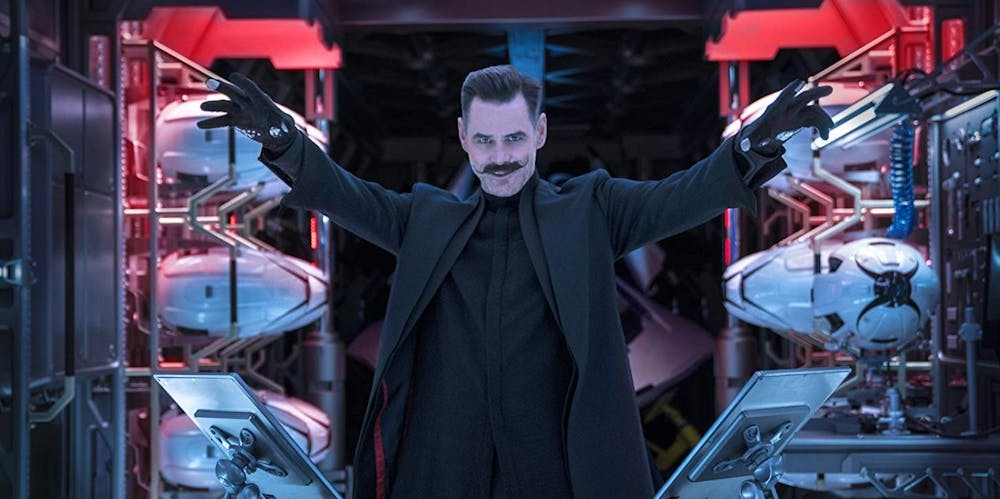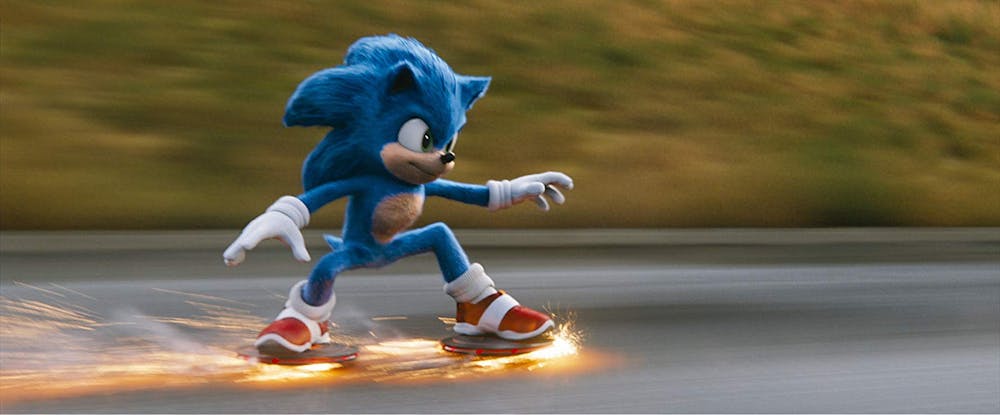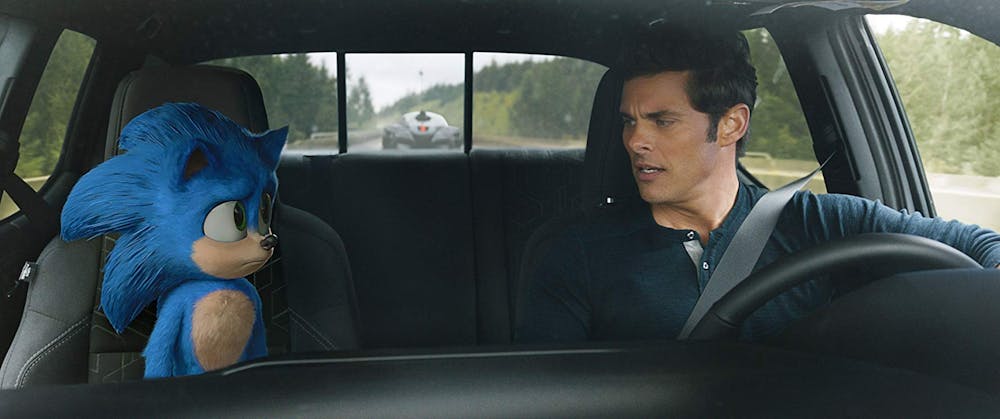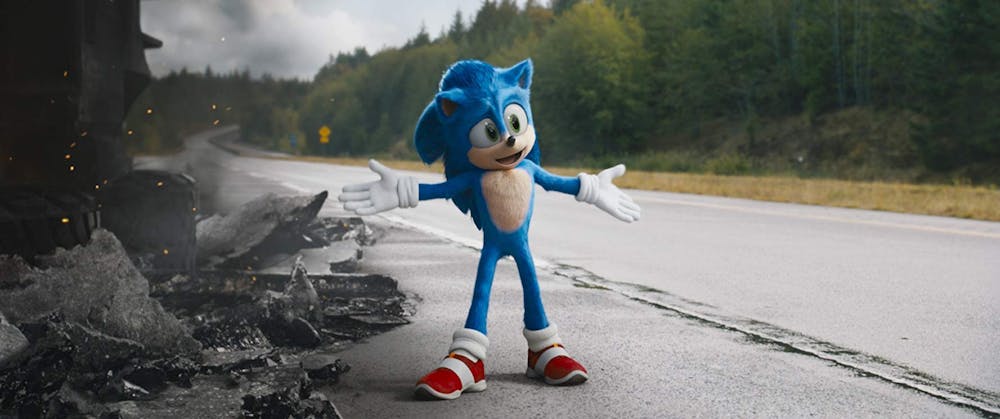Once upon a time in 1991, the world was introduced to Sonic the Hedgehog. Created by Japanese video game developer Sega and debuting with a self-titled game on the Sega Genesis console, he was created to embody everything “cool” at the time. Through an extensive ad campaign promoting this radical new character and the mythical power of “Blast Processing,” Sonic made people go wild. He came to dominate the 90s, with multiple successful games, cartoons, merchandising opportunities, and even theme parks.
Then came the new millennium, and it all went to Hell. In the aftermath of the franchise’s jump to 3D gameplay, the 2006 release of Sonic the Hedgehog (dubbed Sonic ‘06) sent the entire series back leaps and bounds both in terms of gameplay and in the eyes of the general public. Since then, the Sonic franchise has carried a massive chip on its shoulder, playing off its repeatedly low critical reception largely through making fun of itself, if the brand’s infamous Twitter account is anything to go by.
With a hotly anticipated feature adaption on our hands, one must ask: Can Sonic still leave an impact with modern audiences, even in an age where the franchise’s legacy is seemingly built upon irony and its own missteps?
When you’re here, you’re family
Sonic the Hedgehog, directed by Jeff Fowler in his directorial debut, dares to prove so. It tells the story of Sonic (Ben Schwartz), a teenage blue hedgehog with the amazing abilities of super speed, teleportation rings, and knowing what Uber is despite not having a cell phone. At the outset, our blue blur’s been hiding out on our planet in idyllic Green Hills, Montana, putzing around with the locals and trying to keep his sanity in a self-imposed exile. After a freak accident draws the wandering eye of one Dr. Ivo Robotnik (Jim Carrey), Sonic’s forced to go on the run and ultimately must embrace his developing powers to save the world…or so one would think.

Image from IMDb
The movie’s actually about Sheriff Tom Wachowski (Jason Marsden) having to deal with feelings of insecurity over his small town life as he and his wife Rachel (Natasha Rothwell) bond over their mutual love of Olive Garden (which is a running gag) and the wonders of Zello, Speed, and The Naked Gun. Wachowski’s planning on moving to San Francisco to “see some action,” until he meets a weird blue hedgehog who’s been spying on him and his wife. He then unintentionally becomes a widely-known terrorist by escorting said hedgehog to San Francisco in his Toyota pick-up truck while also fighting off a psychopathic Jim Carrey who wants that hedgehog dead as dirt. Tom ultimately learns that small towns beat big towns, or how to be a good dad, or insert your Aesop moral of choice here.
I’m going to cut the chase; fans young and old of the series are sure to get a kick out of Sonic the Hedgehog. It’s chock-full of references to the franchise’s tenured past and high-speed action that clearly draws from the Quicksilver sequences in Days of Future Past. However, if you barely know what a “Sonic” is, the movie only truly works if you view it as an 90s period piece, attempting to harken back to the days of movies like E.T. and its numerous copycats with all that would imply. It ticks off all the boxes. A wacky fantastical creature that shows up on Earth and doesn’t fit in? Check. A largely generic protagonist who has to help our title character and ends up learning something along the way? Check. Throw in an ungodly amount of pop culture references and attempts to relate to the adult audience a la The Smurfs and Hop, and you’ve got a bingo.
However, regardless of the writing, it goes without saying how much Carrey and Schwartz carry this film with their performances alone. Schwartz as Sonic does an excellent job of capturing the character (or at least, what little character is there to capture), even if it does get somewhat overbearing at times. Carrey, meanwhile, literally loses his mind in front of a camera for 90 minutes, and it’s a performance for the ages. Everybody else gets little to do by comparison, with Marsden running through the motions of having another cartoon animal bum a ride off him to some exotic location. Except for the few times we actually get to see Sonic or Robotnik in action, you’ve very literally seen this all before.
Crunching hedgehogs
It’s nearly impossible to talk about this film without acknowledging the infamous online backlash regarding Sonic’s original appearance. The public hated it, one of the lead programmers on the original Sonic game was befuddled by it, and Paramount executives literally came out saying that the initial design was solely in play because they thought it’d gel better with the live action nature of the film. Personally, I stand in the camp of supporting the original design, if partially out of an intrigue akin to my fond love of Tom Hooper’s Cats, and partially under the aforementioned 90s movie logic that (had this film been made back then), Sonic would have been a horrifying puppet monstrosity only the hellish fires of the Jim Henson Creature Shop could forge.

Image from IMDb
However, regardless of what this says about modern fandom entitlement in an age where people seemingly do nothing but whine about “Snyder Cut” this and “Duel of the Fates” that, Sonic is an oasis. Despite the odds being completely against them, the digital effects artists on this project did work that is commendable and applaudable. The revised design and animation, guided by longtime Sonic artist Tyson Hesse, is pitch perfect. It doesn’t change the fact that there was undoubtedly a good amount of crunch (needlessly long work hours) in play to rework all of the animation and design done prior, even with the film delayed, or the fact that the studio that worked on the rework, MPC, was closed down shortly before the film released, laying off roughly 800 people at the drop of a hat. It most certainly doesn’t change the fact that all of this fuss was raised to force people to spend time redeveloping the one thing that, compared to the rest of this movie’s issues, didn’t need to change one bit. It almost begs the question: is this how we value visual effects artists? Do they deserve this kind of treatment, this blame, even when you know for a fact that they had no say in what they had to render? Is Sonic the Hedgehog even worthy of being the hill to die on?
With that being said, what’s more disappointing about Sonic than the mistreatment of its visual effects artists is undoubtedly the music. In a franchise almost universally known for how hard it goes in the soundtrack department (thanks in part to longtime series composer and Crush 40 frontman Jun Senoue), the movie’s soundtrack pales in comparison. Save for the occasional reprise of “Green Hill Zone” and other motifs from the Genesis days (originally composed by Masato Nakamura), it’s a shame that Sonic’s music, done by Fury Road and Deadpool veteran Junkie X.L., feels so derivative at times. Heck, the same could be said for the movie’s theme song. How we live in a world where this got chosen over this, I’ll never know.
Running in circles

Image from IMDb
Admittedly, I feel my disillusionment with Sonic the Hedgehog may just be the result of years upon years of not just disillusionment with the Sonic franchise, but perhaps overexposure to films of this ilk. As I was leaving the theater after watching this film, the kids in my audience were absolutely losing their minds in such a way I haven’t seen in some time. It was a pure, rapturous high in the aftermath of the movie they saw, untainted by years of cynicism and how the Internet has interpreted their hero over the years.
I can’t guarantee that you’ll like this movie, regardless of whether or not you’re a fan of the source material. However, in my tenure covering more family-oriented fare, I’ve never seen the intended audience for a film like Sonic the Hedgehog react the way they did. As much as I may complain on and on about this film, I won’t deny it. If this movie came out when I was their age, I probably would have been losing my mind too.

Images: IMDb
Featured Image: IMDb
For more entertainment related content, visit us at Byte BSU!




















